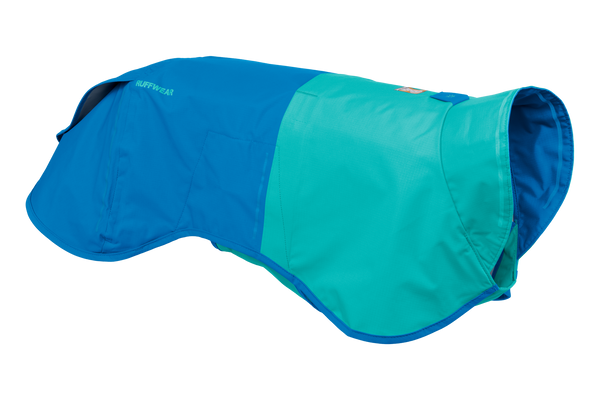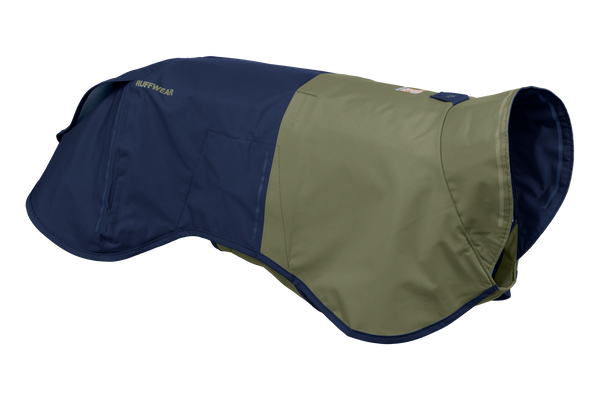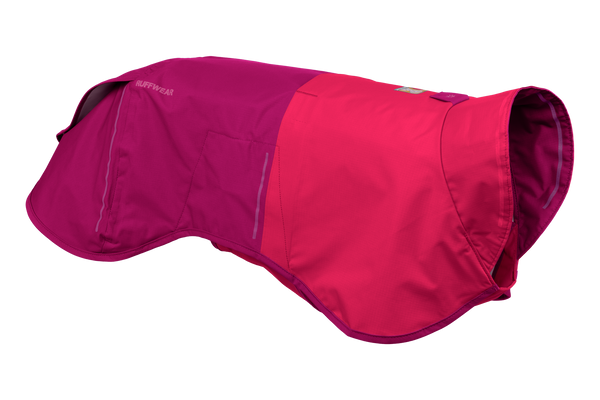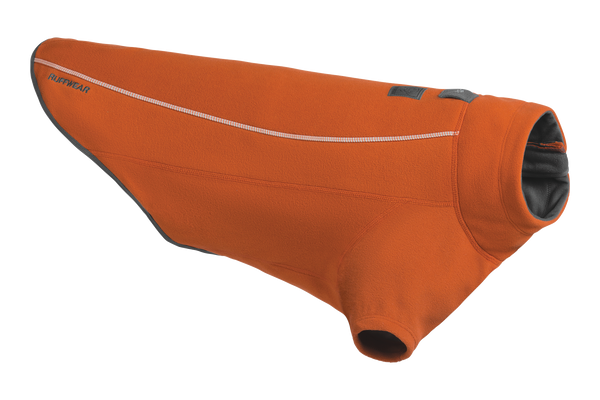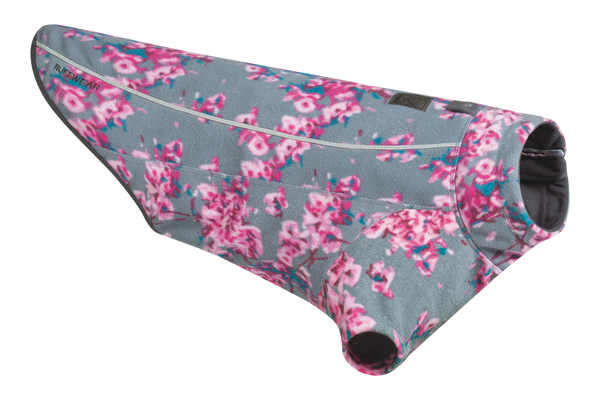How to Backpack with Your Dog
For those of you who are looking to share your love of backpacking with your dog – or maybe even establish a new love for it together – you’re in the right place for all things tips, tricks, and gear. We’ll start with the basics then dive into the nitty gritty of gear essentials, trail etiquette, and backpacking best practices.
CAN YOU BACKPACK WITH A DOG?
Short answer: Yes, you can! Long answer: Keep reading.
I’ve been fortunate to have done (and guided) quite a few backpacking trips in my life. But, I found there was more to learn when I went backpacking with my dog (Lennon - you'll be hearing more about her) for the first time during our first summer together.
Our first day out, I was giddy. By the time we got to our first camp, my legs were jelly. My face hurt from smiling so much. And, I took about 92 pictures of Lennon in her backpack overlooking majestic views within the first 3 miles of our hike alone.
I felt wild. Thrilled. And all I wanted to do was get right back out there with her.
Lennon was stoked. Fulfilled. Unleashing her inner explorer and completely in her element.

We’d both just discovered our new greatest joy in life at the same exact time: backpacking together.
My biggest takeaway? Not only is backpacking with a tail-wagging, pack-wearing, trail-trotting sidekick totally doable, it's an experience that creates a deeper connection to each other and the wilderness you explore.
START HERE: HOW TO BACKPACK WITH YOUR DOG
Lennon and I have logged many-a trail miles backpacking since then, and I’m excited to share the inside scoop on the trail wins and trail learnings we’ve had so you and your dog can get out there, too.
I'll cover:
- The Golden Rule: Four words that will start you and your dog off on the right paw.
- Trip Planning: How to prepare for your backpacking trip and find dog-friendly trails and campsites.
- Practicing: Introduce your dog to wearing a pack, and tips for getting you and your dog trail-ready.
- The Gear: What gear to pack for your dog on your backpacking trip, how to pack it, and how much weight your dog can carry in their pack.
- On-Trail Tips: The scoop on trail etiquette, leave no trace, and more.
Let's hit the trail!

THE GOLDEN RULE OF BACKPACKING
When someone’s looking to try backpacking with their dog, there’s one place I always like to start, and it’s right here with these four words:
Hike your dog’s hike.
If you approach all your planning and head out on your trip with this top of mind, you’ll be golden.
If you’re backpacking with your dog, you’re going to be carrying a little extra weight. You’ll be sticking to wilderness areas where dogs are permitted. You may be changing up your usual pace or distance or trip lengths.
And – you’ll be having a blast enjoying the outdoors in a whole new way with your best buddy by your side.

HOW TO PLAN A BACKPACKING TRIP WITH YOUR DOG
Welcome to the dreaming and scheming portion of this guide. You get to do some precursory exploring through different wild and scenic regions and find a wag-worthy trail for you and your pup.
If you’re digging into this guide, it’s likely this is going to be your first backpacking trip (of many, hopefully!) with your dog. Here are a few ways to set you both up for success.
KEEP IT SIMPLE TO START
Starting with an overnighter with conservative mileage is not only encouraged, but also a great way for you and your dog to find your trail legs and learn a few things.
My first trip with Lennon was an overnighter. We packed 5 miles out, camped, and packed 5 miles back. It was a trail I felt confident on, and I knew we had an easy-out in case we needed it.
Could Lennon have gone bigger? Sure. Did we keep it simple, have an awesome trip, and immediately plan our next one? Absolutely.
Having a trip duration and distance in mind will help narrow down trails as you start to research.
FINDING A DOG-FRIENDLY BACKPACKING TRAIL
As you do look at different trails and wilderness areas, one thing to keep an eye out for is whether or not dogs are allowed and what the leash regulations are for that specific trail during the time of your trip.
Here’s where I usually start for finding dog-friendly trails:
- Most national parks don’t allow dogs on backpacking trails and in wilderness areas (best to research park by park)
- Most national forests and state parks welcome dogs and are a great place to start
- Ask around – friends with the inside scoop are invaluable
- I tend to prioritize trails with plenty of water sources – for both filtering/drinking and for a quick way to cool off in the summer

WHAT TO KNOW ABOUT THE TRAIL
Trail? Check. Now, dig a little deeper and get familiar with what the trail is like. Things I always look at:
- Elevation: 5 flat miles are very different from 5 miles with 1000 feet of elevation gain
- Terrain: Particularly rough and rocky trails are a good reason to pack a set of boots for your dog
- Wildlife: Get to know what you might encounter on the trail – and how to pack and respond accordingly
- Weather: Find the typical weather for that area during the time of year you’ll be going
- Water sources: If there aren’t many places to stop and filter water, that means you’ll have to pack and carry more of it
PRACTICING & TRAINING FOR A BACKPACKING TRIP WITH YOUR DOG
Build up fitness. Dry-run gear before hitting the trail. Praise, play, and treats go a long way.
Heading out for walks and hikes regularly while slowly building up to your planned mileage is a great way to build a solid, trail-ready fitness foundation for your dog.
Brushing up on a few trail skills like “sit”, “stay”, and “leave it” will come in handy with trail etiquette (which we’ll cover down below).
Try practicing in different environments. I found that what came easily to Lennon on our neighborhood walks took a little more work in the much more exciting and distracting environment of a trail with all sorts of smells and new friends to make.
HELPING YOUR DOG GET USED TO A BACKPACK
Packs can also take some getting used to. Have your dog wear their pack on walks and short hikes. It’ll give both of you the chance to get to know the pack and its features. Plus, you can dial in the fit. Start with an empty pack, then work up to carrying some weight.
Lots of praise, treats, and fun while the pack is on go a long way when a dog is warming up to a pack. Now, merely grabbing Lennon’s Palisades™ Pack out of the closet gets her tail wagging.
Pro Tip: This get-to-know-your-gear method is awesome for boots as well. If you think boots might make an appearance on your dog’s paws during your trip, it’s worth spending some time getting used to them, too.

INTRODUCING YOUR DOG TO A TENT
The final piece that will pay off big time once you’re in the backcountry? The tent.
Every dog is different, so a practice run with the tent can at least give you an idea of where your dog’s comfort level is with a tent and the prospect of sleeping in it.
For Lennon’s first introduction to our backcountry abode, I set up a meet and greet in my living room. I let her watch, sniff, and investigate as I set the tent up. She was a little wary of the tent poles and their sounds, so I took my time, doled out a lot of “good girl”s with a side of treats, and it wasn’t long before she was at ease around the setup.
And once it was up, she was all too happy to hop in and curl up for a snooze.
While she took to the tent rather quickly, it might take longer for some. Keep practicing. You can learn a lot about how your pup and tents get along with a night car camping or even camping out in your backyard. They’re good opportunities for you to test out your own gear... and see who hogs the sleeping bag most. Answer: my dog.

THE PRE-TRIP VET CHECK
A pre-trip check-in with your vet is kinda like checking your car’s tire pressure and making sure the oil’s been changed before heading out on a road trip. Confirm vaccines are up-to-date, medications are in order, and your dog has the all-clear for carrying gear and exploring to their heart's content.
GEAR: HOW TO CHOOSE A BACKPACK FOR YOUR DOG
While Ruffwear makes a whole range of dog packs for the trail, you’re here because you have backpacking on the mind. I’ll stick to the two packs that are designed for overnight backpacking: the Approach™ Pack and the Palisades™ Pack.
Both packs are built trail-tough, have room for overnight essentials, and feature Ruffwear’s signature radial cut saddlebag design. It helps keep contents stabilized and weight over the dog’s shoulders rather than the center of their back.
Approach™ Pack | Overnight & Day Hike Pack
If you’re looking for something that can work for both hiking and backpacking, check out the Approach ™ Pack. It has enough room to carry gear for an overnight backpacking trip (or longer if you intend to shoulder some of your dog’s gear) but isn’t so roomy that it would be overkill for a day hike.

Office dog and fellow backpacker Raya dons the Approach™ Pack on her treks with her human, Alex, who’s a fan of its versatility. And, she can fit quite a bit in there.

1. Hi & Light™ Leash
2. Poop Bags
3. Med Kit
4. Pack Out Bag™
5. Quencher™ Bowl
6. Grip Trex™ Boots
7. Approach™ Pack
8. Quencher™ Cinch Top Bowl
9. Highlands™ Sleeping Bag
10. Climate Changer™ Fleece
Palisades™ Pack | Overnight & Multi-Night Trips
If you’re looking for something with high-volume saddlebags, much-loved features like a compression system and removable saddlebags, check out the Palisades™ Pack. It has the highest carrying capacity of our packs and also includes two 1-liter water bladders for your dog to call their own.

Atka is a former Ruffwear office dog who still loves to backpack with her human, Caroline. Caroline is a fan of the removable saddlebags on the Palisades™ Pack. If you’ve ever relished the feeling of dropping your pack once you find camp for the night, then you get it. The bonus here is there’s a fully-functional harness underneath similar to our Web Master™.

YOUR DOG'S GEAR GUIDE FOR BACKPACKING
Backpacking lists are hugely personal and can vary from person to person. It’s not too different for dogs. And, both their list and yours list will likely change the more you backpack and discover what works for you and what doesn’t.
Start with your dog’s basic needs in the backcountry. They actually aren’t too far off from your own.
- Food
- Water
- First-aid
- Warmth
- Sleep system
- Shelter
FOOD
Pack what you normally feed your dog, plus a little extra. Your dog’s going to be burning extra calories trekking along. I also typically add about 2 extra meals as back-up in case our stay in the backcountry gets extended. While this will be one of the heavier things in your dog’s pack, it’ll get lighter as they eat through it.
For packing dog food, Ziploc bags are hard to beat. They keep water out, food in, and can be washed and reused for future trips.
If you're in bear country, pack your dog's food (and yours) away in a bear canister.
If you’re interested in lightening the load a little, explore freeze dried or dehydrated dog food. Definitely add this to your pre-trip practice list though. A slow introduction to different food in the frontcountry avoids finding out something doesn’t agree with your dog’s stomach in the backcountry – or in your tent.
WATER
Lennon is a Palisades™ Pack pup, so she has her own water bladders that came with the pack. I like having dedicated bottles for her so I can keep track of her water intake and make sure she’s staying hydrated.
To fill back up on trail, filter water from lakes, streams, and rivers. Lennon almost never misses an opportunity to also take a dip and cool off while I'm hard at work filtering water. #Teamwork.
BOWL
Typically one bowl works just fine for both food and water. I’m a Bivy™ Bowl fanatic. I love its sturdy structure and space-saving collapsibility. Some folks appreciate that the Quencher™ packs down and comes in different sizes, so you can get the one that’s not-too-big and not-too-small but just right.
If you’re looking for a large dog water bowl, the Great Basin™ Dog Bowl is a great packable option.
FIRST-AID
There are some great dog first aid kits out there. Some key things to keep an eye out for if you're building your own are gauze, self-adhering bandages/wrap, tick removers, and dog-safe antihistamine. If you’re unsure how to use any of it, chat with your vet or even take a dog-specific first-aid course.
SLEEP SYSTEM
Backpacking means back-to-back days of activity, so quality sleep becomes even more essential for dogs in the backcountry.
The Highlands™ Sleeping Bag is a go-to. It's available in two sizes, it's durable, and it comes with a compression sack. Its warmth is similar to that of a 2- or 3-season human sleeping bag: good for late spring, summer, and early fall for most dogs. If you’re in colder temps or you know your dog runs cold, add the Highlands™ Pad as an extra barrier and extra bit of cush between your pup and the cold ground.

WARMTH
Knowing your dog and knowing the weather are key parts of the equation on this one. Even when I’m confident Lennon will be plenty warm in her sleeping bag, I’ll still pack a fleece jacket like the Climate Changer™ Pullover as backup. I like it since it’s lightweight and doesn’t have any hardware, making it both comfortable and cozy to sleep in if needed.
Other popular picks for even more warmth are the Powder Hound™ and Quinzee™, which packs into its own built-in stuff sack.
Other Backcountry Dog Essentials
- Boots for paw protection on rough terrain
- Treats
- Dog float coat for water adventures
- Pick-up bags
- Collar with up-to-date tags
- Beacon™ Safety Light
- Swamp Cooler Core™ cooling add-on for your pack
- Leash
The Switchbak™ Leash is the versatile, veritable swiss-army knife of leashes and has served me and Lennon well. I like the extra bit of length for wearing it around my waist, keeping my hands free for trekking poles and still having plenty of legroom between me and her.
Another contender: the Hitch Hiker™. Lots of rope to work with, highly adjustable, and doubles up as a portable hitch once you get to camp.
HOW ABOUT HUMAN GEAR FOR BACKPACKING WITH DOGS?
I’ve long been a fan of keeping my own gear and pack simple and light. Over the course of all my trips with Lennon, I’ve made a few adaptations in favor of the Golden Rule: hiking my dog’s hike.
Shelter
I have a fairly light 2-person tent. It’s the perfect size for the two of us and our gear, but I know the tent floor doesn’t stand a chance against Lennon’s paws. I keep her nails pretty trim, and I also pack a second tent footprint for the inside of the tent. Pretty sure we both can relax more with that thing, and it adds just a few ounces to my pack. Worth it.
Human Sleep System
This is more a thing to consider rather than a recommendation. I still pack an inflatable sleeping pad for myself, but it’s a risk I’m willing to take for a decent night’s sleep.
If you’re going to live on the edge like me, pack a patch kit in case a claw pokes a hole in your “it’ll be fine!” theory. If that’s too much thrill for you, opt for a foam sleeping pad.
TIP 1: HOW TO PACK YOUR DOG’S BACKPACK
Similar to the way you’d pack your own pack, stow heavier items closer to your dog’s body. The vertical stash pockets on both the Approach and Palisades Packs are great spots to stash water and food.

Distribute the weight evenly between the two saddlebags. Sometimes this means doing a gear shuffle as your dog works their way through food and water.
TIP 2: HOW MUCH WEIGHT CAN YOUR DOG CARRY IN A BACKPACK?
A general rule of thumb is to keep total carrying weight (including the pack and its contents) under 25% of your dog’s body weight.
Fitness and breed will affect how much they can carry. First-time or senior backpackers may want to go lighter. Puppies are encouraged to wait until they're fully grown before carrying any weight. An empty backpack is a great way to get them started as backpackers in-training (like we did with Ripley in our photo below.)

My first trip with Lennon, I kept her pack lighter and had her carry just food, water, pick-up bags, and boots. I shouldered the rest, gladly carrying extra weight as a trade-off for her having a blast while easing into the backpacking scene.
TIP 3: THE BACKPACKER’S GUIDE TO TRAIL ETIQUETTE
Packing out dog poop. Minding other trail users – wildlife included.
The folks at Leave No Trace are our go-to pros on this topic, and they recommend that dog waste be picked up and packed out in pick-up bags. It helps protect water sources, wildlife, and the natural beauty of the places we’re exploring.
Managing multiple bags of poop in the backcountry may not sound ideal – one reason we love the Pack Out Bag™. It comes in two sizes, the larger of which works well for overnight trips.
For multiple-night trips that would exceed the capacity of the Pack Out Bag, I turn to a designated wide-mouthed water bottle as a makeshift “poop tube” for all the full-pick up bags. It’s light, holds in the stank, and is explode-proof. Very important.

Leash regulations might differ depending on the wilderness area you are in and the time of year. You can check their website or call in and speak with a ranger before heading out.
If leashes are required, use a leash. If leashes aren’t required, strong recall is a must. It’ll go a long way in making friends on the trail by respecting both other trail users and wildlife. And, having one regardless will come in handy if you have to navigate any tricky obstacles or trail hazards.
TIP 4: YOUR DOG’S NO.1 ESSENTIAL PIECE OF GEAR IN THE BACKCOUNTRY
Hint: It’s you.
You know your dog best, and that just might be your most valuable asset in the backcountry. Whether it’s staying in tune with their energy and comfort levels, spotting trail hazards, or navigating unexpected scenarios, every dog will be different, but every dog will look to their human as their advocate.
When I’m backpacking with Lennon, I know we’re good when she’s head high, ears forward, sniffing everything, and eagerly heading down the trail with her usual enthusiastic swagger. If she’s lagging behind, walking tenderly, laying down, or seeking shade, I know something’s up and can respond to her needs in that moment.

I’ve also gotten in the habit of doing a “bed check” with her each night after camp is set and dinner is done and dusted.
To her, it’s just a welcomed full-body massage after a long day on the trail. For me, it’s my opportunity to check her body, limbs, and paw pads for scratches and tenderness, look between paw pads for thorns or gunk, and thoroughly search for ticks. I use this time and information as part of my commitment to the Golden Rule. To keep hiking my dog’s hike, I can keep tabs on whether there’s any reason we might need to take it easy the next day or change plans.
READY TO GO BACKPACKING WITH YOUR DOG?
You’ve got this.
Whew. That was a lot. It all certainly comes with the territory for backpacking with your trail buddy, though. And, with the right planning, practice, and gear, you’ve totally got this.
Having your sidekick there with you on the trail, at camp, beside you in the tent, soaking it all up – it makes it all worth it, and will be the reason that you’ll probably be dreaming up your next trip together before you even get back to the car.
When you do get out there, we’d love to hear about your adventure. Tag us on Instagram or Facebook @ruffweareurope.
Have some more questions that we didn’t cover here? Let us know. You can email us at info@ruffwear.co.uk.













